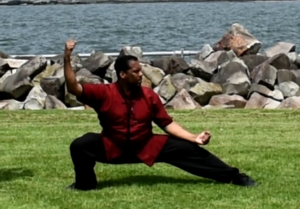
Often, I hear people say that it’s hard to make time for practice. This is understandable, activities of the world today require so much of our time. If you are sincere about finding time for practice here are a couple suggestions that may help. These tips can be applied to anything that we want to learn. The truth is we can always find time for our genuine interests.
- Make a schedule- make a list of your daily activities and see where you can fit in time for practice. You may have to make some substitutions. Maybe you’ll find that you spend time scrolling on the internet or sitting in idle thought for some minutes during the day. See if the time spent on any of the less important activities can be used for practice.
- Get it out of the way- Many times people say I will practice later and then the day gets too busy or they become tired at the end of the day and skip practice. A lot of teachers and practitioners like to practice early in the morning. Making this a habit ensures that you get in your practice time. It also sets the mood for the rest of the day to accomplish other tasks.
- Practice what you learn soon after learning it- In class we teach new movements when students are ready. It’s a good idea to practice those movements after class or the next morning to help cement them in your memory. Watching a video of the movement or sequence soon after also helps. The same applies for movement corrections. When we teach corrections it’s important to practice the correction and implement it into your form work. What we see is that sometimes people only do the movements during a class session and so we get stuck repeating the same corrections instead of moving forward.
- Be consistent- It doesn’t matter when you decide to practice during the day or if you wind up practicing at different times everyday the main thing is consistency. If you allot yourself 5 to 10 minutes minimum of practice time everyday it will be better than one hour a week. Keeping the movements fresh in our minds builds neurological connections. If you start out with a short amount of time you may find that you begin to practice longer and longer. Ideally you will want to practice for longer periods of time especially as your Tai Chi vocabulary grows and you have more things to practice.
- Practice single movements- Sometimes we get caught up in wanting to know more movements. It’s ok to want to know the sequence but remember good Tai Chi is quality over quantity. Each movement of the form has one energy or more as it’s essence. Each movement has a feel and a purpose. Get to know the intimate details of each posture. Feel what is full and what is empty, where the weight is, where the movement generates from and so on. Be able to treat each movement with the attention that it deserves. It’s ok to spend one practice session with one posture.
These five tips will help you build a solid practice that will keep you moving forward. Tai Chi is an art that requires study and introspection. Your teacher can show you the guidelines and basic principles, but in the end your Tai Chi will be an expression of your inner self and a reflection of the time you spend in practice.

